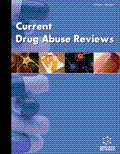Abstract
Alcoholic liver disease accounts for significant economic burden with second most common cause for liver transplantation in the US. Although alcohol abstinence is most crucial, morbidity and mortality occur amongst those with continuing alcohol intake and with established end stage liver disease due to lack of specific treatment modalities to manage this disease. Patients with severe acute alcoholic hepatitis, a distinct subset of alcoholic liver disease have a potential for mortality in about 25% within about 1 month despite treatment with available specific agents such as corticosteroids and/or pentoxifylline. Hence, there is clear need for newer and better treatment options to manage these patients. In this article, potential emerging newer targets to manage this disease are discussed including intestinal decontamination, caspase inhibitors, antioxidants, and interlukins. In the background of encouraging emerging data (retrospective data from the UNOS database and data from a case matched prospective French study) on the beneficial effects of liver transplantation amongst patients with alcoholic hepatitis who are non-responders to current medical treatments, this article would also deal controversies surrounding the role and use of liver transplantation in patients with alcoholic hepatitis. Issues such as rule of 6 months of abstinence, ethical issues, and shortage of donor organs will be debated.
Keywords: Alcoholic liver disease, antioxidants, caspase inhibitors, interlukins, intestinal decontamination, liver transplantation.
 42
42















